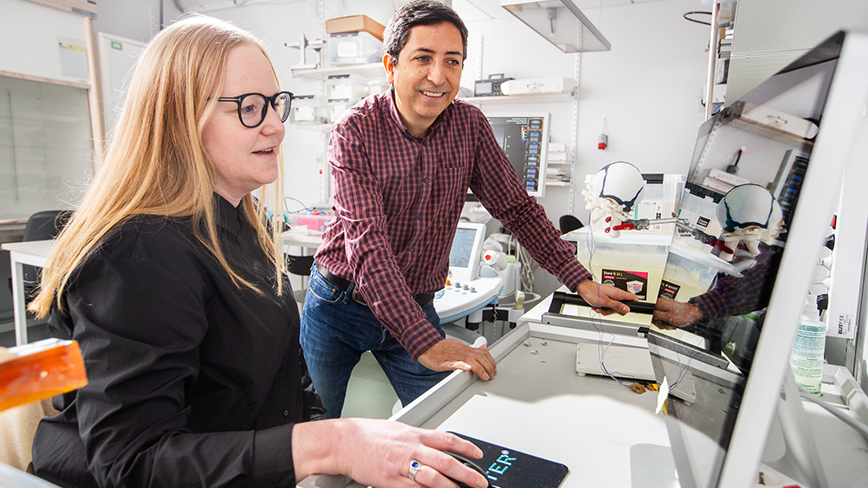Jonasson Centre: From donation to innovation

Just over ten years ago, the Jonasson Centre for Medical Imaging was inaugurated at KTH Royal Institute of Technology in Flemingsberg - thanks to a large private donation.
Today, the centre conducts advanced research in body imaging to develop new diagnostic and treatment methods in healthcare.
"The donation has been absolutely crucial for us to be able to build up cutting-edge research," says Matilda Larsson, professor and head of department.
Husband and wife Kerstin and Rune Jonasson's large donation of SEK 70 million in 2011 was the starting point for the medical technology research conducted at the Jonasson Centre at KTH Royal Institute of Technology in Flemingsberg, in collaboration with Karolinska University Hospital and Karolinska Institutet.
The centre focuses on medical imaging, using everything from microscopes to larger equipment that images entire organs. Advanced imaging techniques based on ultrasound and MRI are used to image the human body.
"In the long term, we want to develop new technology that improves healthcare and find new or improved methods for diagnosing different types of diseases and injuries," says Matilda Larsson, Professor of Medical Imaging at KTH Royal Institute of Technology and Head of the Centre.
The project would not have been possible without the donation
Research is conducted towards specific clinical applications in a wide range of areas such as cancer, dementia, cardiovascular and obstetrics.
- In my research in ultrasound imaging, we are developing new techniques to detect signs of cardiovascular disease earlier. For example, we have developed elastography to determine how stiff vessels or plaques are, which is a risk factor for stroke," says Matilda Larsson.
Another major research area is gynaecology, where Matilda Larsson is developing diagnostic methods for childbirth injuries to the pelvic floor muscles in women, an area that has not yet been researched much.
"These projects would not have been possible without the MRI and ultrasound technology that we were able to purchase thanks to the donation. With this technology, we have been able to build new knowledge that is driving research forward. Developments in AI, machine learning and image analysis have also helped to strengthen our research within the centre, where several projects are run by Rodrigo Moreno, professor of magnetic resonance imaging at KTH," she says.
Unique infrastructure makes it possible to produce primary research results
The research at the Jonasson Centre is based on collaborations with research groups at Karolinska University Hospital, but also with universities in Sweden and internationally. According to Matilda Larsson, access to a unique infrastructure has made it easier to produce primary research results that show that the centre is strong in the field of medical imaging.
"We would not have been able to do this kind of research without collaborations around this technology. The more we do and the more we grow, the more we can make a name for ourselves internationally. Medical imaging is a major field of research and an important part of healthcare, which is becoming increasingly important as the technology evolves through more advanced analysis," she says.
Attracting the right talent to the centre is crucial, says Matilda Larsson. "Thanks to advanced technology and external funding, it is easier to recruit doctoral students and researchers who can conduct their research using the technology within the centre. In addition, the educational programmes at KTH can be improved and developed.
"We give students practical experience in using and programming medical devices such as ultrasound machines, which can be beneficial for their future careers."
And what is the vision for the future?
"We have come a long way in building a research centre that makes progress, and today Sweden and KTH are far ahead in the field. It has been a number of years since some of the technology was purchased, and eventually it will need to be updated so that we can continue to take the research forward. Our research has enormous potential to make a difference, both for healthcare and for human health. The opportunities provided by external funding are crucial to take medical technology research into the future."
